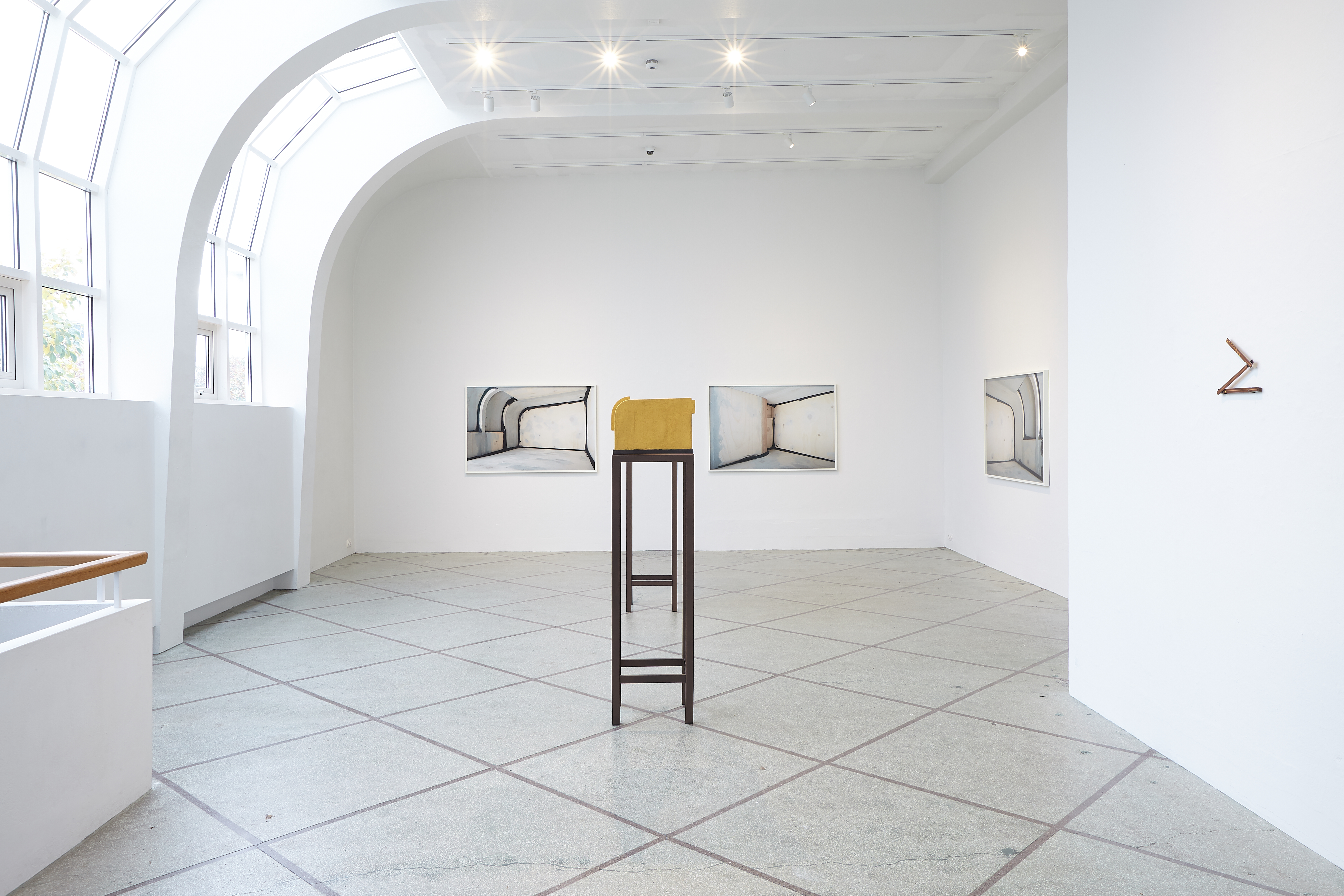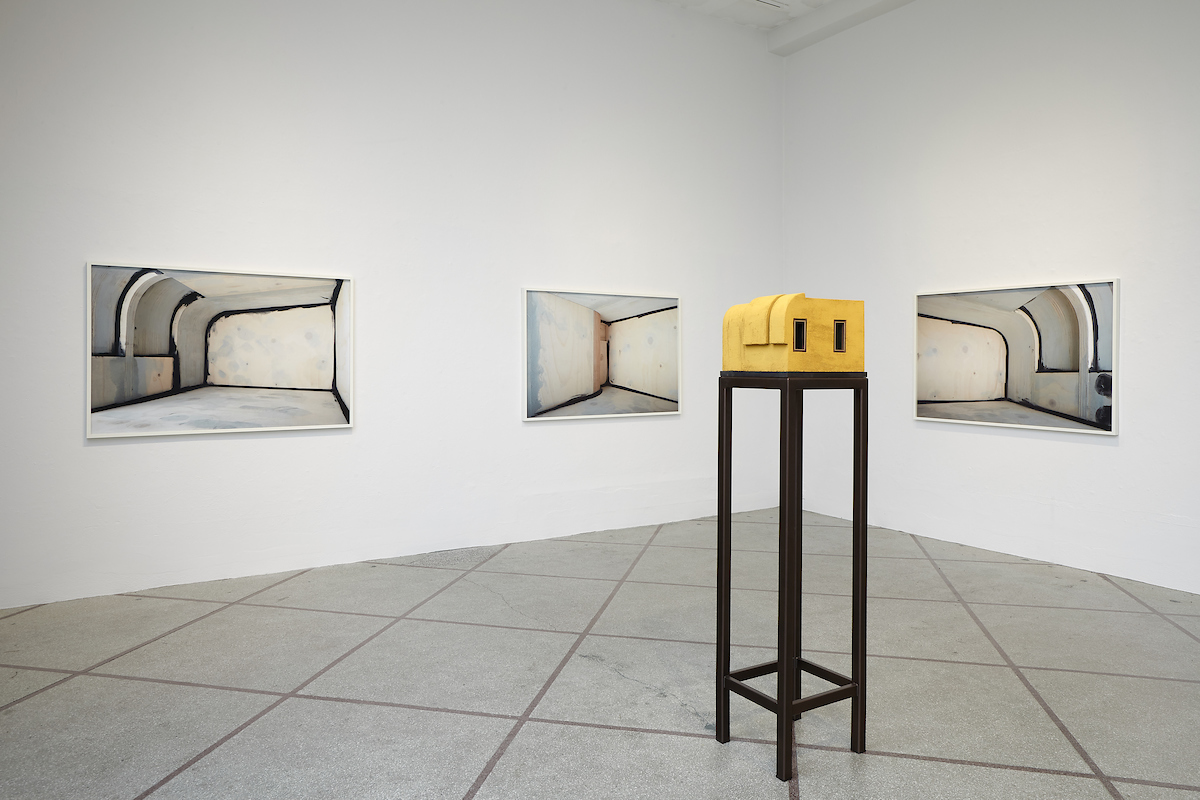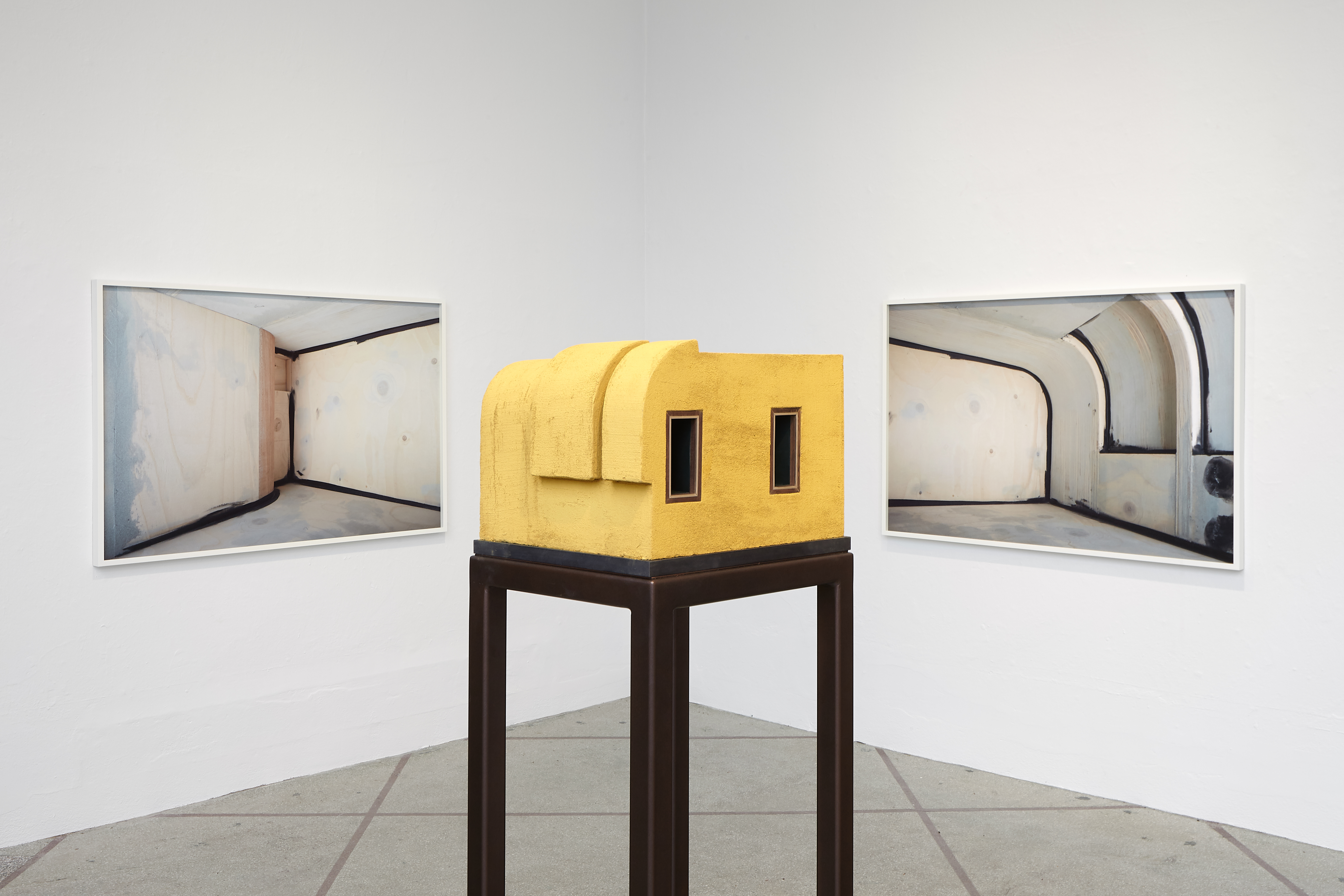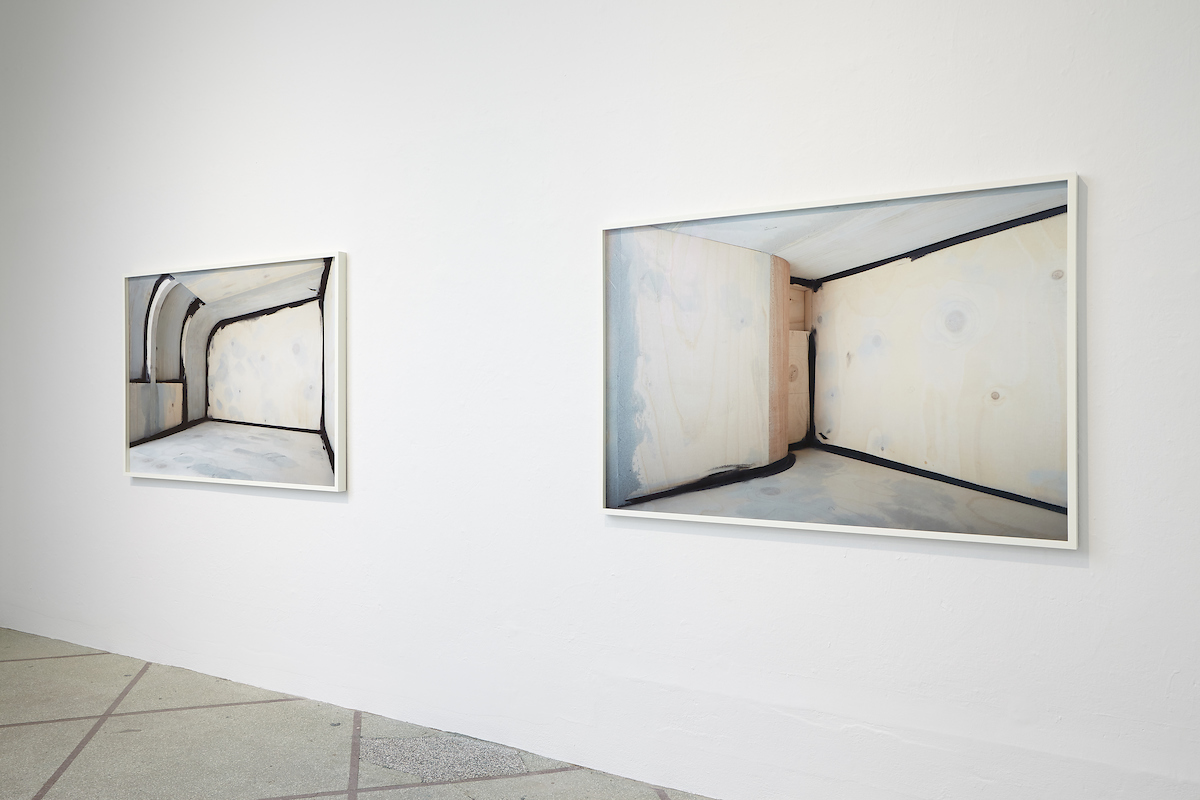












ELSEWHERE
2019
Asmundarsalur
Reykjavik, Iceland.
archival inkjet prints
concrete sculptures
2019
Asmundarsalur
Reykjavik, Iceland.
archival inkjet prints
concrete sculptures
Two concrete sculptures rest on pedestals, positioned to face one another. When placed together - like two halves of a split orange - they form an exact replica of the exhibition building´s architectural footprint. Originally built by sculptor Ásmundur Sveinsson as his studio, the space itself becomes both subject and setting in the work. Embedded within the concrete sculptures is a fictional circular hallway: when the two halves are joined, they create the illusion og a never-ending corridor, a space that loops infinitely within itself. The accompanying photographs, taken from inside the moulds used to cast the sculptures, are composed as spatial studies on a human scale - emphasizing proportion, perspective, and material surface from the viewpoint of an inhabitant. Mounted on the wall is a custom measuring stick, marked with pre-metric units such as inch, ell, span and fathom - each historically derived from the human body. This particular stick is calibrated to the artist´s own body measurements, grounding the work in a personal, coroporeal scale.
Exhibition text by
Xarene Eskandar
Xarene Eskandar
Art and architecture have historically scaled down our body to experience moments of awe through the monumentality of th physical objects—think cathedrals and authoritarian architecture. With the introduction of technologies of the image, like photography to mattes and maquettes for film, scaling happens not only in the physical and known dimension of space but also in the abstract and perceptual dimension of one’s mind: by means of these objects the body is perceptually scaled to occupy these small physical worlds in the endless space of our mind, and it feels real.
The key to this self-recreation is simply being able to day-dream: the meditative act of creating oneself through non-linear and non-logical vignettes. Day-dreaming begins with a small and mundane recurrence of a memory, such as walking along a path we’ve walked countless, thoughtless times, that then weaves itself into larger scenarios whereby suddenly we are observing from outside, a grand narrative in a parallel timeline or outside our immediate physical reach. But it is still real as it ties everything back down to the embodied scale, grounding it to our immediate senses.
In this vein of traversing the different scales of the body and recreating ourselves to experience reality at the fullest, we can look to the architect Juhani Pallasmaa who pushes this even further by recreating himself in different materialities to experience architecture: “I confront the city with my body; my legs measure the length of the arcade and the width of the square; my gaze unconsciously projects my body onto the facade of the cathedral, where it roams over the mouldings and contours, sensing the size of recesses and projections; my body weight meets the mass of the cathedral door, and my hand grasps the door pull as I enter the dark void behind. I experience myself in the city, and the city exists through my embodied experience. The city and my body supplement and define each other.
I dwell in the city and the city dwells in me.” In Elín Hansdóttir’s work we are tasked with pushing ourselves even further than connecting the body and architecture. Here, we are given the vessels to become galactic bodie
I dwell in the city and the city dwells in me.” In Elín Hansdóttir’s work we are tasked with pushing ourselves even further than connecting the body and architecture. Here, we are given the vessels to become galactic bodie